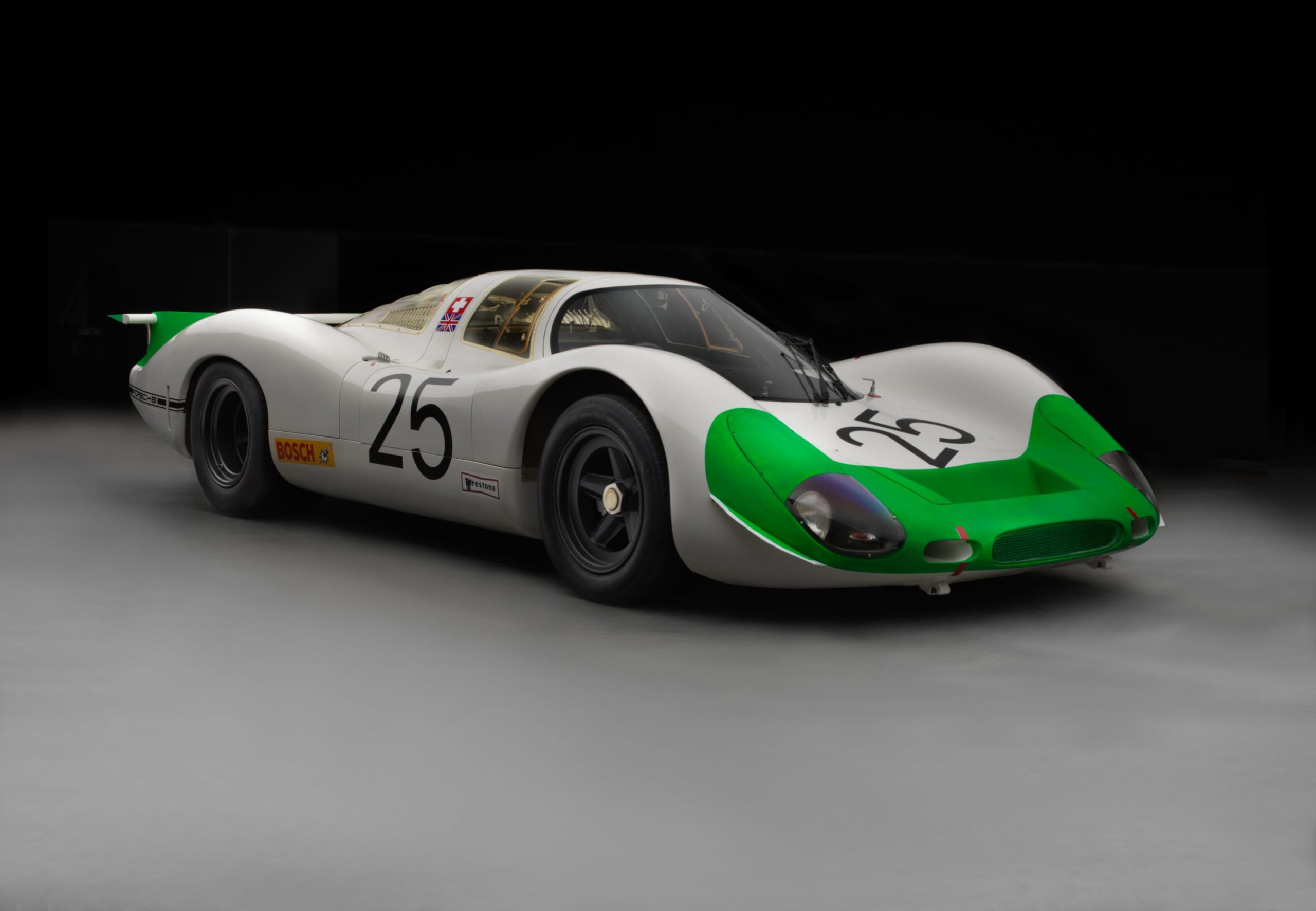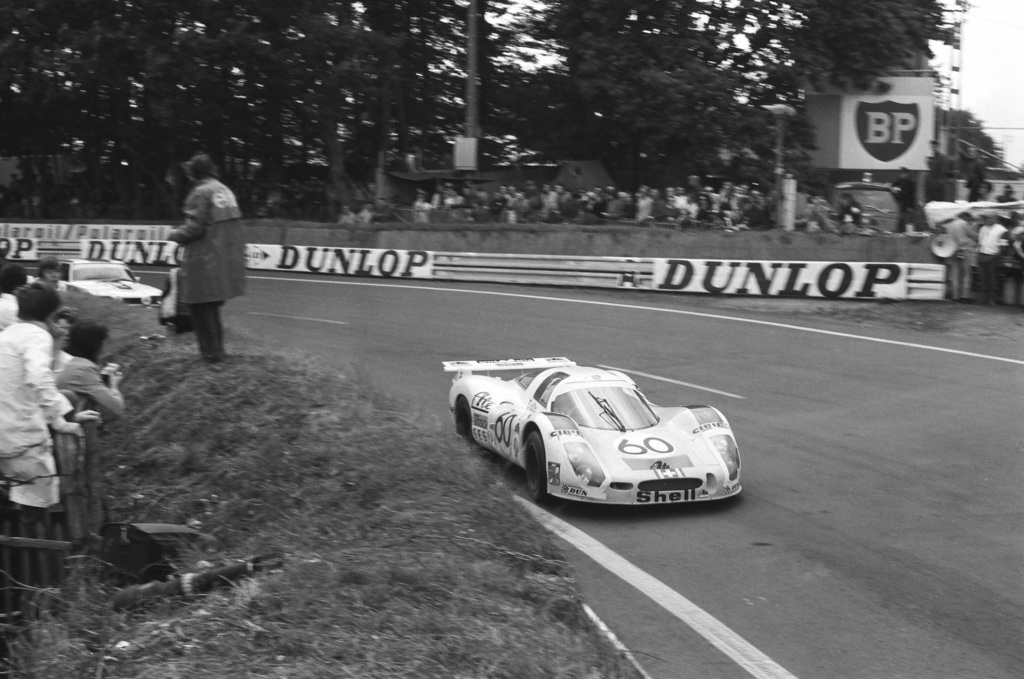Porsche 908LH Coupé (1968 – 1969)
The 908LH “Long Tail”
Premiere: April 7, 1968 Le Mans test day / The Engine: Flat-eight air-cooled engine, mounted midship, twin overhead camshafts, fuel-injected, 2997 cc, 350 hp at 8400 rpm / Key Drivers: Jo Siffert, Vic Elford, Ludovico Scarfiotti, Hans Hermann, Jacky Ickx, Brian Redman / Race Victories: 1968 Nürburgring 1000km, 1968 SPA-Franchorchamps 1000km, 1969 Monza 1000km, 1969 SPA-Franchorchamps 1000km
The Background
In the late sixties, Ferdinand Piëch wanted Porsche at the top of motor sports and the 908 was his answer. In facing the best that both Ferrari and Ford could produce, it sparked a new generation of Porche prototypes that led to their most successful era. For the first time, Porsche completed in all the championship races with hopes of overall victory. This new era began when the 908 Coupés supported the much smaller 907 mid way through the 1968 championship season.
The 908 was the first car built for the CSI’s prototype Group 6 class that limited engine capacity to 3 liters. In 1968 the only competition came from the JW Engineering Ford GT40s which won Le Mans and the championship. The 908 prototype was named after its eight-cylinder, flat-6 engine. Driven by some of the best drivers, the 908 had a successful career in 1968/69 that included wins at the SPA-Franchorchamps 1000km two years in a row. Under continual development, the design was modified and raced as the 908/2 and 908/3 Spyder for tighter tracks.
Porsche prototypes can trace their roots back to the 904 Carrera GT, but the 908’s immediate predecessor was the 907. It was a 2.2-liter prototype that secured several key victories in 1968, but often lagged behind the four-liter Ferraris on the faster tracks. The 908 was essentially an upgraded 907, fitted with a three-litre engine for the new 1968 regulations set forth by the Federation Internationale de l’Automobile for the World Championship of Makes. This stepwise evolution was typical of Porsche practice between the 907, 908, 910 and 917.
Ferdinand Piëch was very interested in seeing Porsche succeed on the track. He wanted his cars to be as light and aerodynamically efficient as possible. This meant constant development of the body and chassis. Initially the eight-cylinder engine was first tested in a 907 chassis and the problems of cabin heat and engine vibration had to be addressed. The first two 908s appeared almost identical to the 907 at the 1968 Le Mans Test Days, including a similar spaceframe chassis, fiberglass bodywork and a sleek coupé cabin.
Engine work began as early as July 1967 and the first was completed four months later. It was designed by Hans Mezger with a possibility it would used in Porsche road cars. The new eight was ready at Monza in 1968 with 330 bhp and later “the best examples developed nearly 370 bhp.”¹ Like all previous Porsche engines these were air-cooled with a large engine shroud and fan. It was loosely based of the Type 916, four-cylinder engine from the 914. This meant it was much easier to work on compared to the laborious Type 771 in the 907.
From the project’s onset, the design was constantly reevaluated and this is particularly true with the body aerodynamics. In a search for downforce the Le Mans cars featured longtail bodywork which were later updated with moving flaps and rear wings. Alongside these raced the short tail versions which eventually lost their tops and became the 908/2 Spyder for the 1969 season. That year the FIA announced new rules that removed minimum weight restrictions, luggage space and a spare tire provision. Both the 1969 908 Langheck Coupé and 902/Spyder were used throughout the season. Many of the components were reevaluated included an aluminum chassis frame,
Racing
The 908 was the successor to the 907 and the first Porsche to be engineered to use the maximum allowed 3-litre engine size. Earlier, Porsche had competed in the 3-litre prototype class with up to 2.2-litre engines.
The first 908 appeared at the 1968 Le Mans test day in April. In 1968, the 908/01 was called simply 908 and from 1969, when the 908/02 came, the first generation became known as 908/01. The 3-litre 8-cylinder flat engine developed 257-272 kW – serious power from a normally aspirated engine! The first version of the 908/01 publicly shown was the LH (Langheck, German for “long tail”). The first competition it entered was the Monza 1000 km on April 25, 1968. The two entered cars had rear fins and no rear spoiler.
The Le Mans 24h race was planned for June 15 and 16, but had to be postponed due to French students’ and workers’ strikes that had started in May. The struggles reached into every corner of life in France, so the Le Mans racing event was postponed three and half months to September 28-29. For the Le Mans, the 908 LH now had rear spoiler instead of fins.
Despite the 908 LHs achieving pole position (Jo Siffert, 3:35.4, 225 kmh/139 mph) – the first pole position for Porsche at Le Mans – and the fastest race lap (Rolf Stommelen, 3:38.1, 222 kmh/138 mph), the cars suffered technical problems and 3 cars out of 4 were finally out. The only surviving 908 #33 of Jochen Neerpasch/Rolf Stommelen managed to score third six laps behind the winner and a lap behind the second place 2.2-litre Porsche 907 LH (#66 Rico Steinemann/Dieter Spoerry).
The next race in the calendar was the Paris 1000 km held on October 13, 1968. The track consisted of a part of the Linas-Montlhery banked oval track, but mostly used the nearby roads. The first long-distance race victory (and even a one-two) for the longtail 908 came here. Hans Herrmann/Rolf Stommelen were victorious in the car #12, followed by Vic Elford/Rudi Lins in #14.
For the 1969 season the car was given a new front among other modifications. The distinctive asymmetrical front of the 908/01-68 was gone and the air ducts were symmetrical for the 908/01-69. Porsche fielded five 908/01 LH for the Daytona 24h on February 1, 1969, but the outcome was a complete failure – the engines in all cars broke down. A year before, Porsche 907 LH had wiped the podium with 1-2-3 victory. Despite the fiasco at the Daytona in 1969, the Porsche 1-2-3 victories started to become natural, like at the Monza 1000 km in April 1969. The first two places went to 908/01 LH and third place to a 907.
Next month, the Spa 1000 km race was also won by a 908/01 LH.
As wished by Ferdinand Piëch, Hans Mezger engineered the 12-cylinder 917 to be able to take overall victory at the 1969 Le Mans 24h and in the practise the 917 was the fastest. In total there were 16 Porsches (908, 910, 911, 917) entered by the factory and private teams. Porsche factory team manager was Rico Steinemann who a year earlier had come 2nd (and won 3-litre class) in a 907 LH.
The race had a traditional Le Mans-style start where the drivers had to run across the race track, enter the cars, start the engines, fasten the seat belts and drive away. In reality fastening the seat belt was done during the first lap while driving at full throttle and sometimes the belts were left unfastened. Jacky Ickx protested this starting style by walking, not running, to his car. With the LM-style start there was no time to make sure the doors were safely shut and the introduction of the safety belts didn’t work at all with this type of start. Fatality happened on the first lap – John Woolfe crashed his privately entered 917 and was thrown out of the car. The fuel tank from his car landed in front of the oncoming Ferrari 312P of Chris Amon and exploded in contact. Fortunately Amon survived. The race was halted, but restarted after 2 hours.
The 3-litre 908s were not the favorites against the large engined cars and so the 35 minute pit stop of the #64 908 due to the faulty wheel bearing didn’t sound so dramatic as it would after the race. With less than 4 hours to the checkered flag, the 917 LH #12 was six laps in the lead, but lost the clutch and was out. The 917 LH #14 of Rolf Stommelen/Kurt Ahrens Jr. had retired already earlier. After all the three 917 were out, the race had unbelievable culmination – the #64 908 (Hans Herrmann/Gerard Larrousse) now wanted to beat the #6 Ford GT40 (Jacky Ickx/Jackie Oliver). The 908 team wanted to win Le Mans!
Herrmann was hesitant to use Porsche’s superior braking performance because a brake pad warning light was on. The #64 Porsche 908 and the #6 Ford GT40 consistently swapped the lead during the three last hours of the race. The tension was so high, that a Porsche mechanic even used force on a photographer at the pitlane. Team boss Rico Steinemann said “I will never forget this motor race, whether we gonna win or lose it”.
The lead was exchanged at least 10 times, but Ickx took the victory – the man, who started from the last position as a protest. The Porsche boys lost only by around 50 meters – imagine losing 50 meters on a 4997880 meter distance! Ironically it turned out that the brake pad warning system was faulty and the brakes were okay. By the way, Ickx drove exactly the same car – chassis 1075 – that already won the 1968 Le Mans. Ickx’s protest and the fatal accident with an unfastened driver finally put end to the traditional Le Mans start.
After the season, all the 908 LH built for the 1969 season were rebuilt as 908 Flunder Spyders and sold to private teams, including the 1969 Le Mans fighter. Later, when they became collector’s items, the 908-031 was converted back to 1969 Le Mans longtail coupé form and trim.
The 5-litre prototype class was discontinued for 1972 season in Europe, rendering the 917 unusable, so many 3-litre Porsche 908 were still entered by private teams in 1972 Le Mans 24h. A 908/01 LH-68 of Siffert ATE Racing Team driven by Reinhold Joest/Michel Weber/Mario Casoni scored 3rd.
A Visual History




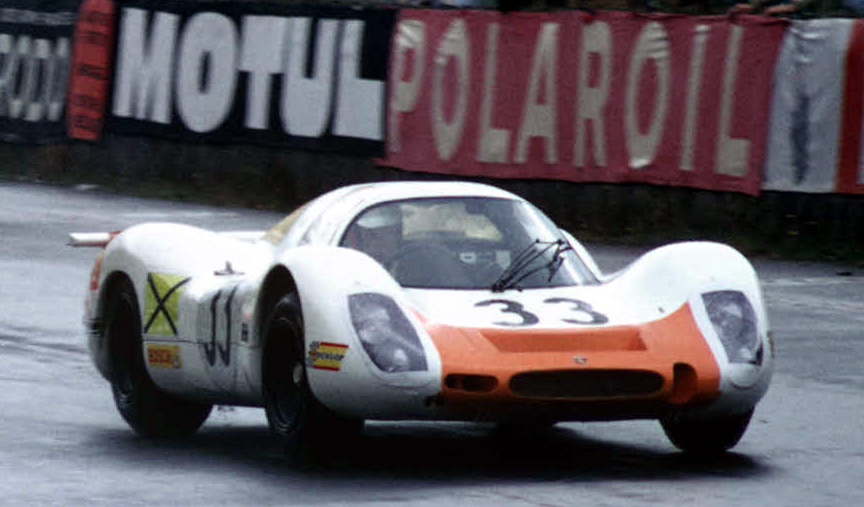

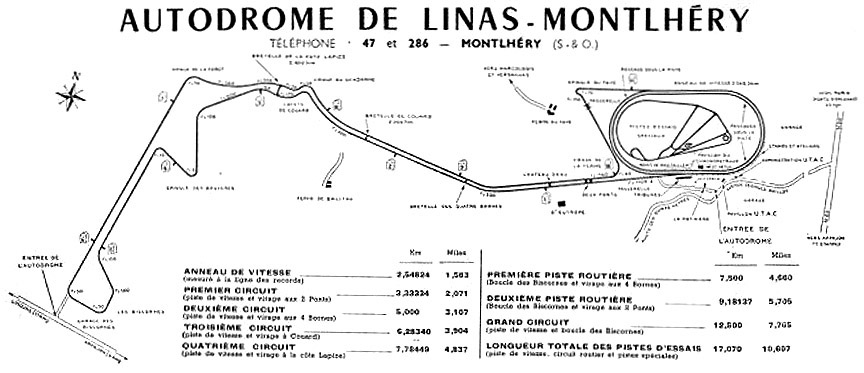
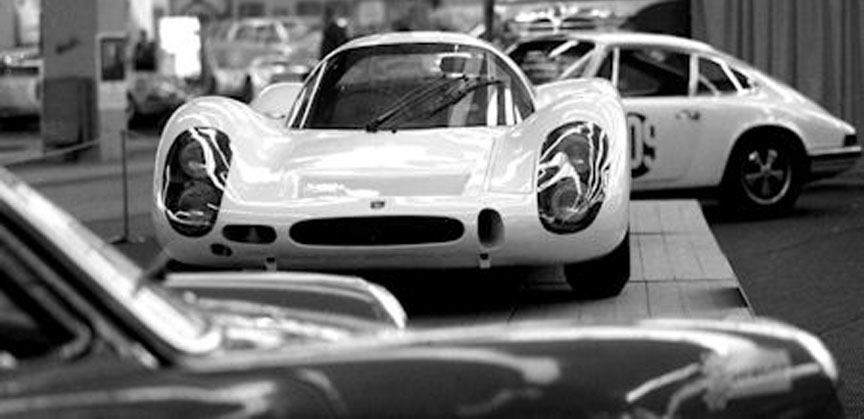
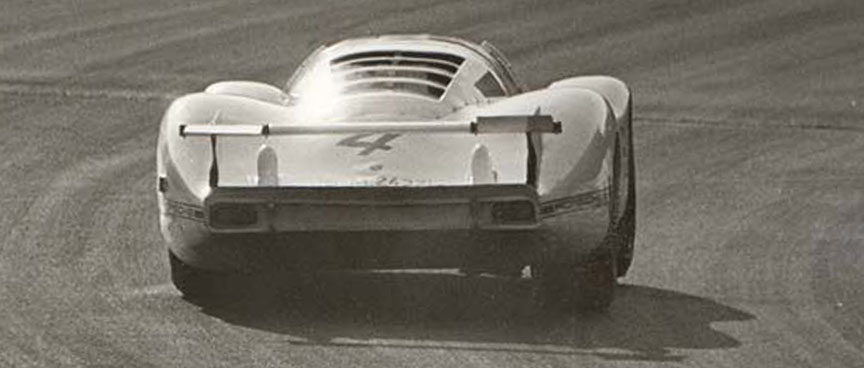


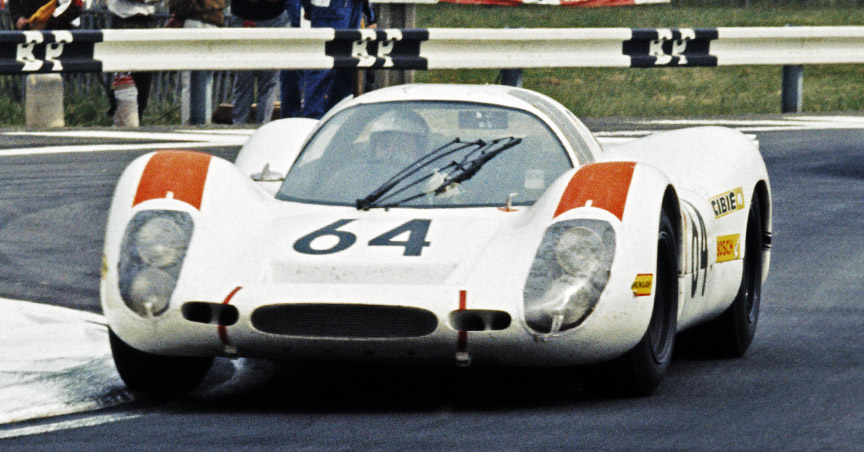
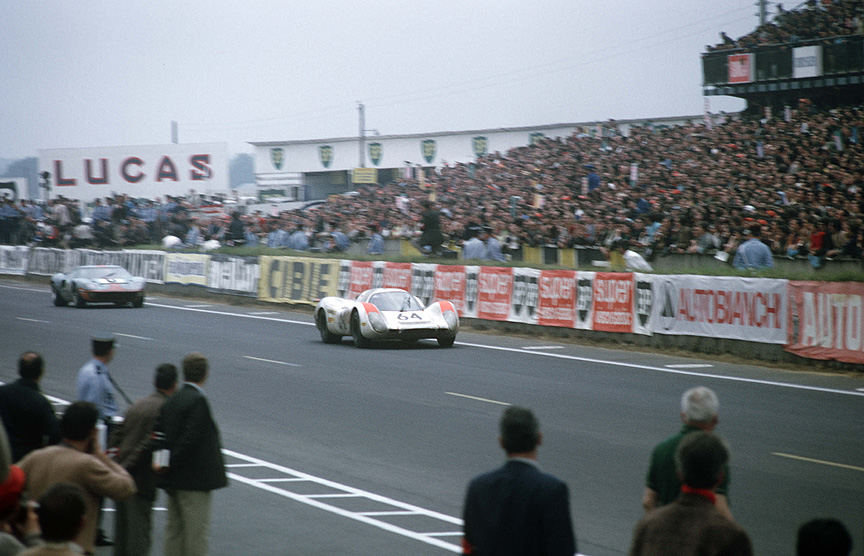



In the Porsche Museum Collection






